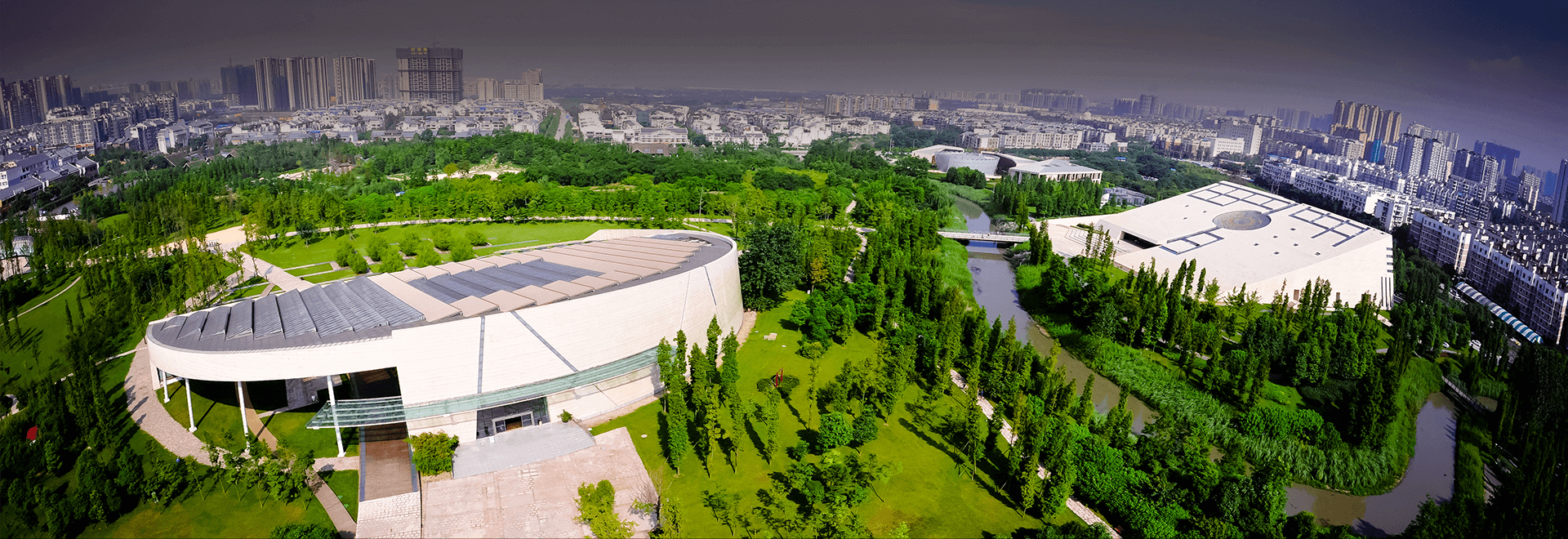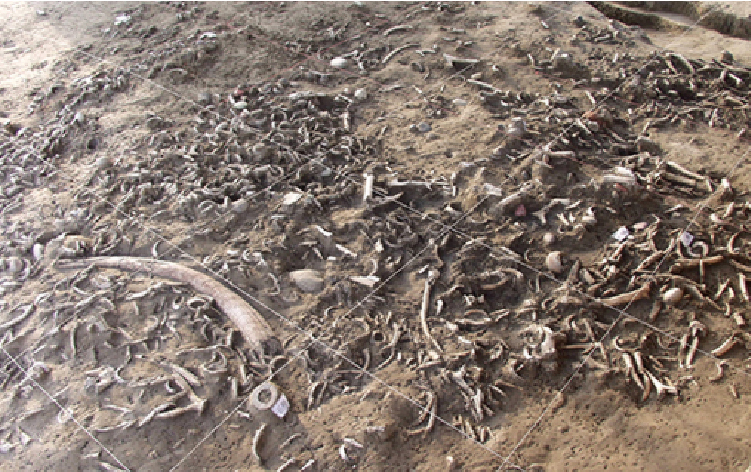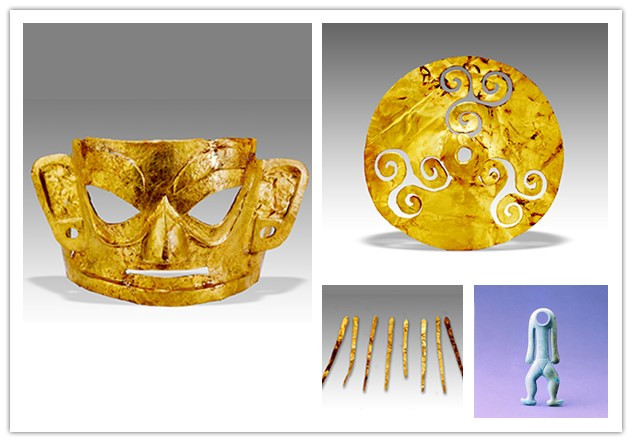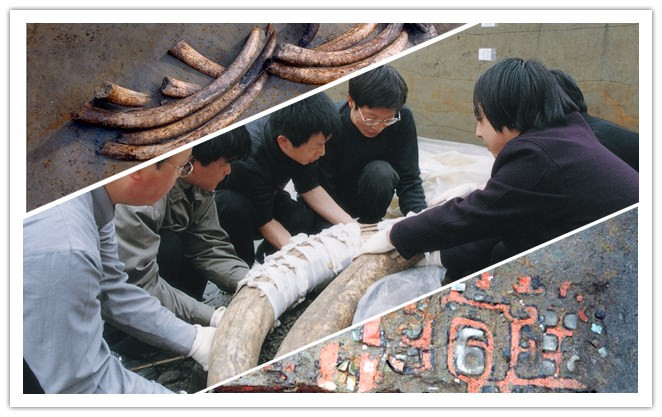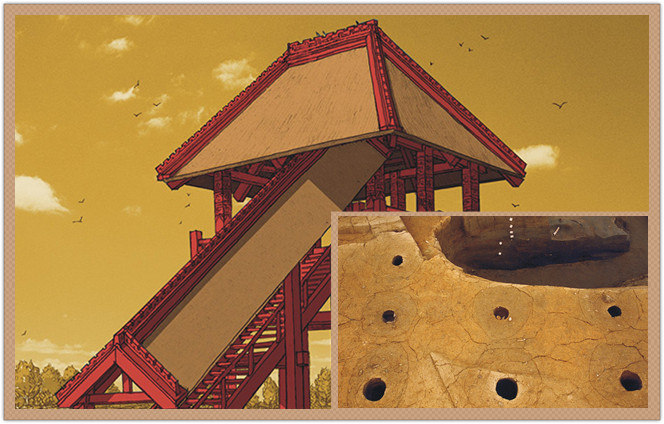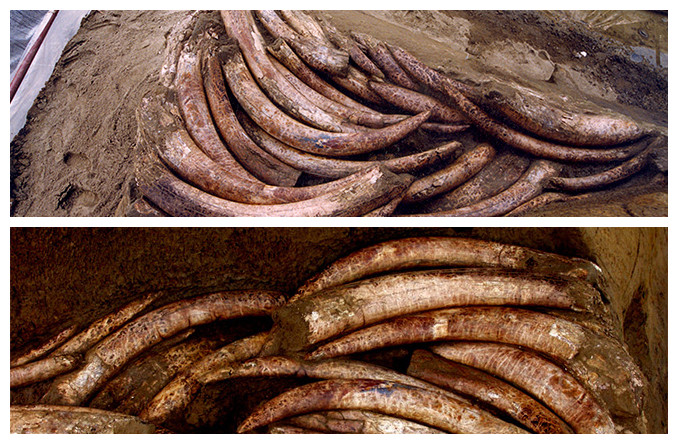 Introdution to Relics Hall
Introdution to Relics Hall
The Relics Hall
The Relics Hall is semi-circular, with a building area of 7,588 square meters, a height of 19 meters, and a span of 63 meters. The large-space structure without columns ensures the integrity of the sacrificial remains, and the long-span steel structure minimizes the impact of the building on the cultural relic itself, creating favorable conditions for archaeological excavation and cultural relic protection.
Within the architecture is the excavation area of the large-scale sacrificial place of Jinsha site, which is also the best-preserved large-scale sacrificial site in Shang and Zhou dynasties in China.
Located in the east of the Site, the “Sacrificial Area” of Jinsha used to be a dedicated riverside sacrificial site in the ancient Shu state period. Covering an area of around 15,000 square meters, it can be traced back to the times between the late Shang Dynasty and the early Spring and Autumn period (approximately between 1,200 BC and 650 BC). It is distributed along the south bank of an ancient river channel. It is likely that the ancient Shu people carried out sacrificial activities on the river bank at first, and buried sacrificial offerings under the river beach and covered them with soil after the ceremony. The sacrificial offerings would be buried again after the next ritual. After more than 500 years’ sacrificial activities, the river beach was basically filled up by the early Spring and Autumn period. At the same time, with the shift of the political center, this sacred place was gradually deserted.
The Sacrificial Remains
Up to now, this place has witnessed the discovery of more than 60 sacrificial remains, with more than 6,000 precious cultural relics including gold, bronze, jade, stone, bone and horn, and lacquer wood artifacts as well as tons of ivory and numerous wild boar tusks, antlers and pottery unearthed.
Judging from these remains, the sacrificial activities of Jinsha people can be roughly divided into three stages, and each stage and even the ritual objects used in the same stage differ greatly from one another.
1.First stage (around 1,200 BC)
In the first stage, the ritual objects were mainly ivory and stone implements, as well as some pottery, lacquered wooden wares and a very small quantity of jade wares.
2.Second stage (around 1,100-850 BC)
In the second stage, a large quantity of jade, bronze and gold wares were used as sacrificial offerings. The ivory used in the first stage was still used in great quantity, but stone implements and lacquered wood were rarely used.
3.Third stage (around 850-650 BC)
The third stage saw extensive use of wild boar tusks, antlers, beautiful stones and pottery, while seeing a sharp decline in the quantity of jade, bronze and gold wares and ivory used in the previous stage.
 Sacrifice of Jinsha
Sacrifice of Jinsha
In ancient times, social productivity was low and human beings couldn’t make sense of some natural phenomena as well as their life cyvcles, so they believed that “all things have a spirit” and that gods are the masters of the world, which led to the belief that maintaining constant dialogues with them determines national survival and flourishment. Ancient people frequently held sacrificial activities to communicate with the gods of heaven and earth in hope for their protection and blessing.
The large-scale sacrificial site found at Jinsha reproduces the frequency and grandeur of sacrificial events in ancient Shu state. The sacrificial methods and offerings vary depending on the day or season, which indicates the complexity of the cultural system of the ancient state. For example, the Sun and Immortal Birds Gold Ornament conveys the worship of the sun, the gold toad foil represents the worship of the moon, jade ritual vessels such as Bi, Zhang, Ge and Cong express the admiration for heaven and earth and the natural mountains and rivers, and animal-shaped patterns show the love and reverence for wild beasts.
Religious rituals accounts for the most important events of the ancient Shu society. The rich religious style embodied by this site is a complete departure from the ancient capital civilizations in other parts of China, showing distinct regional characteristics. For example, the centralized discovery of large quantities of ivory, wild boar tusks and antlers within the sacrificial area is a singular case among China’s ancient capital ruins.
 Introduction to Sites
Introduction to Sites


